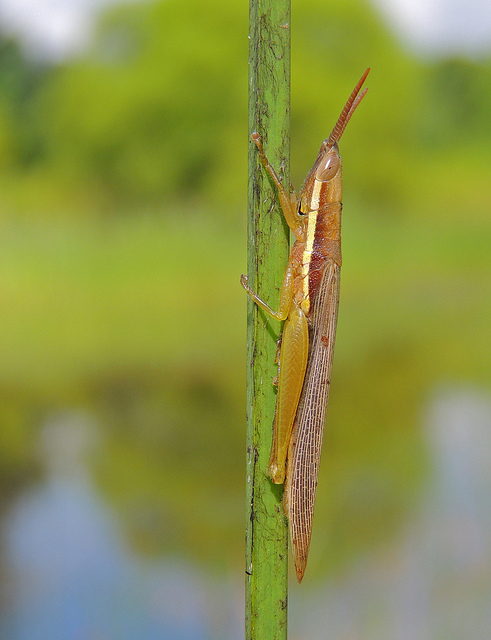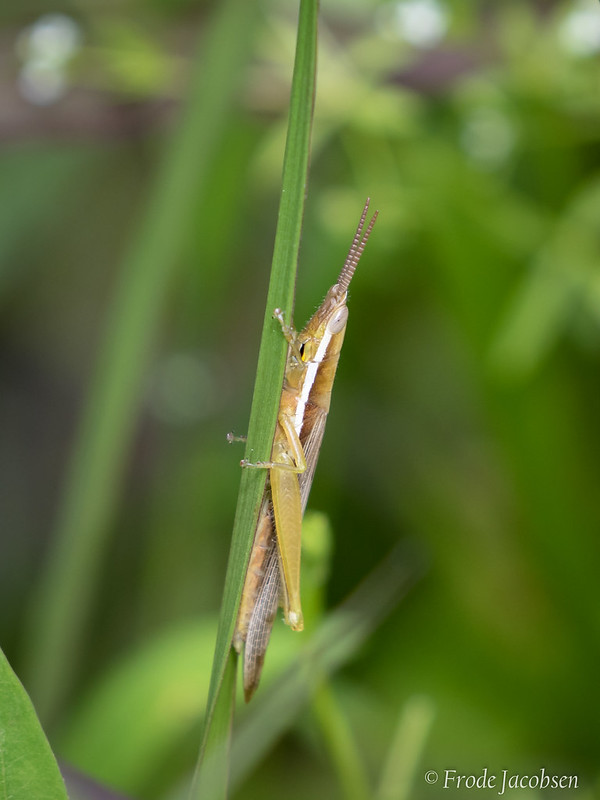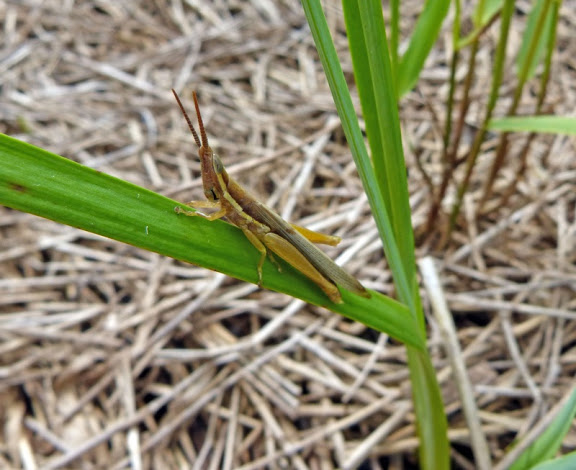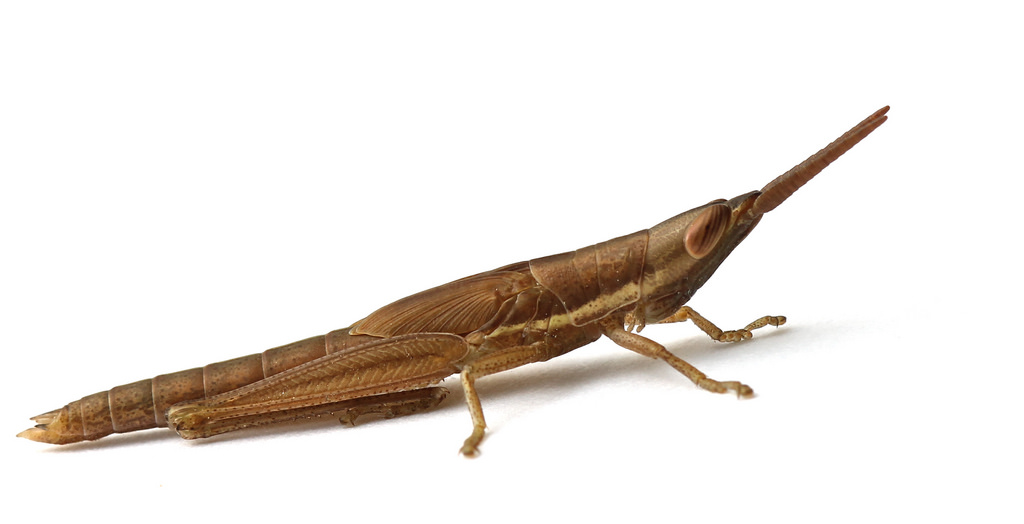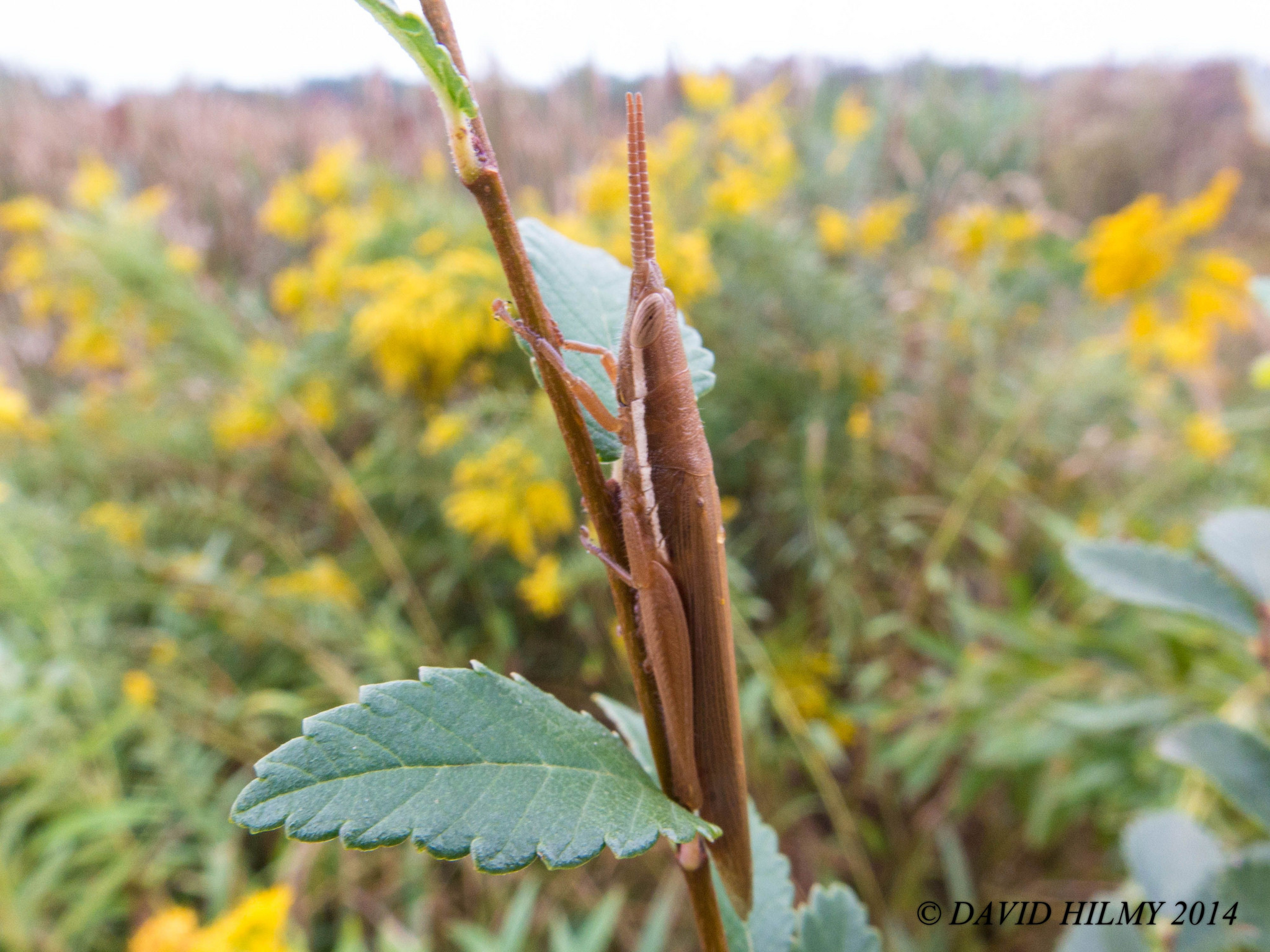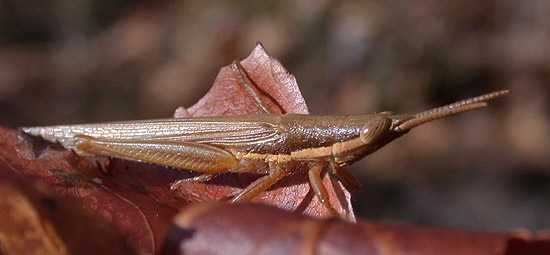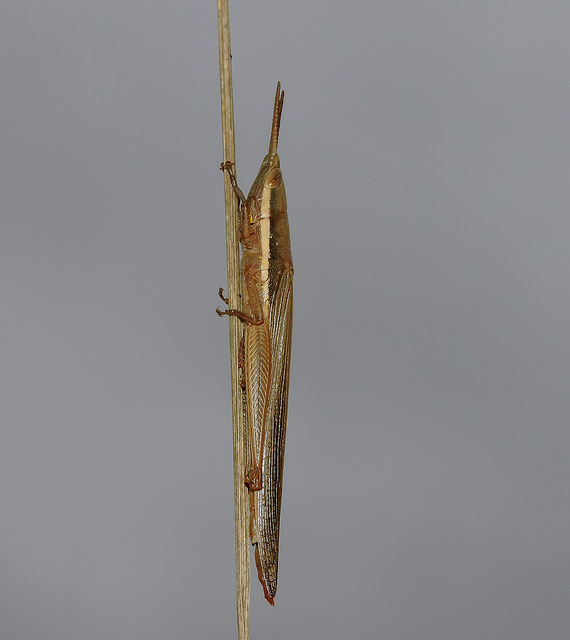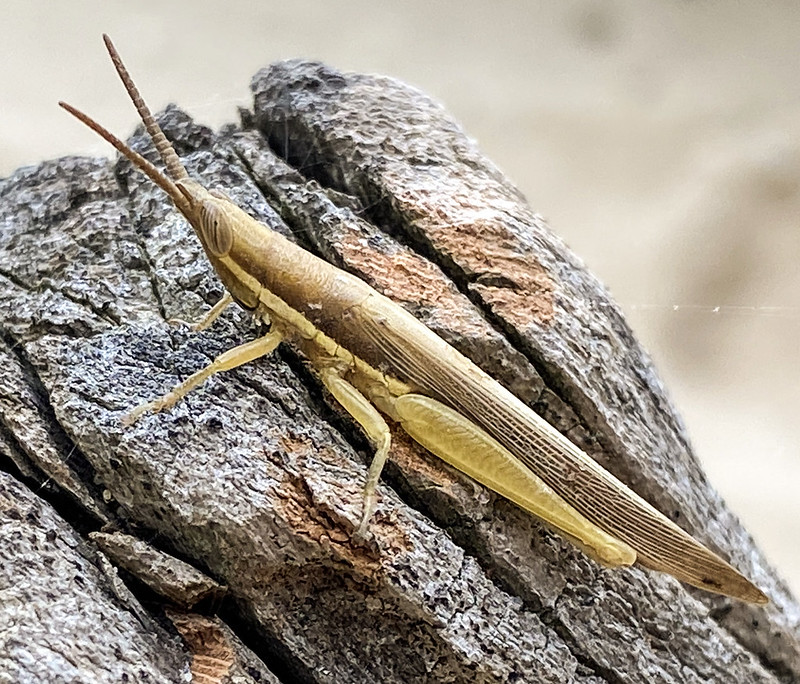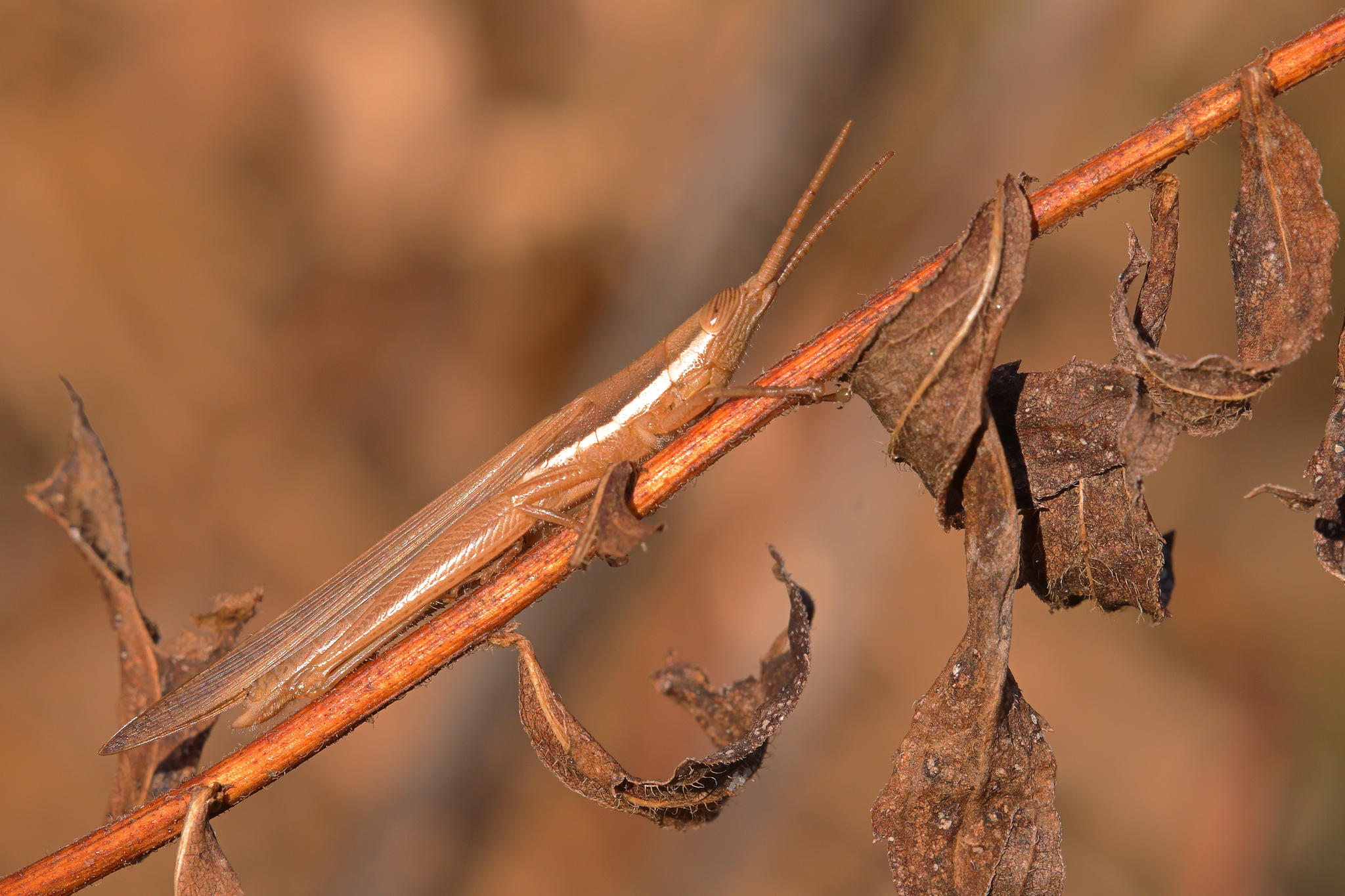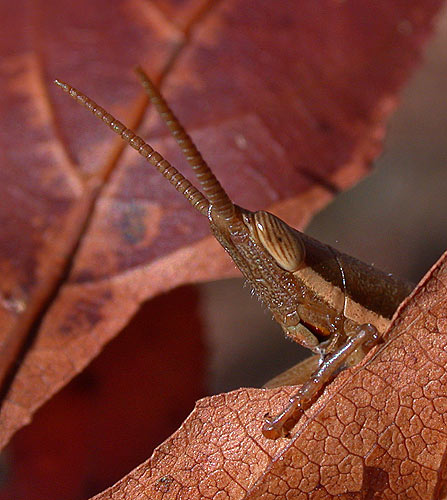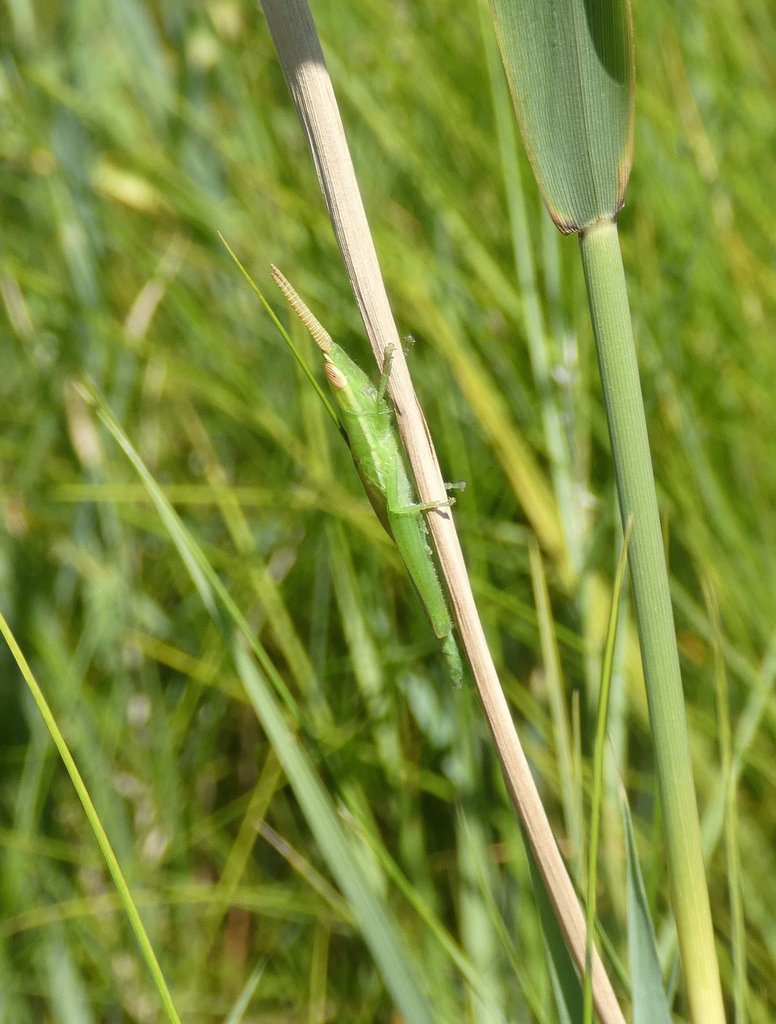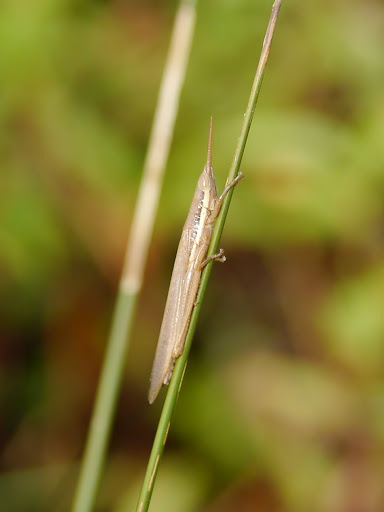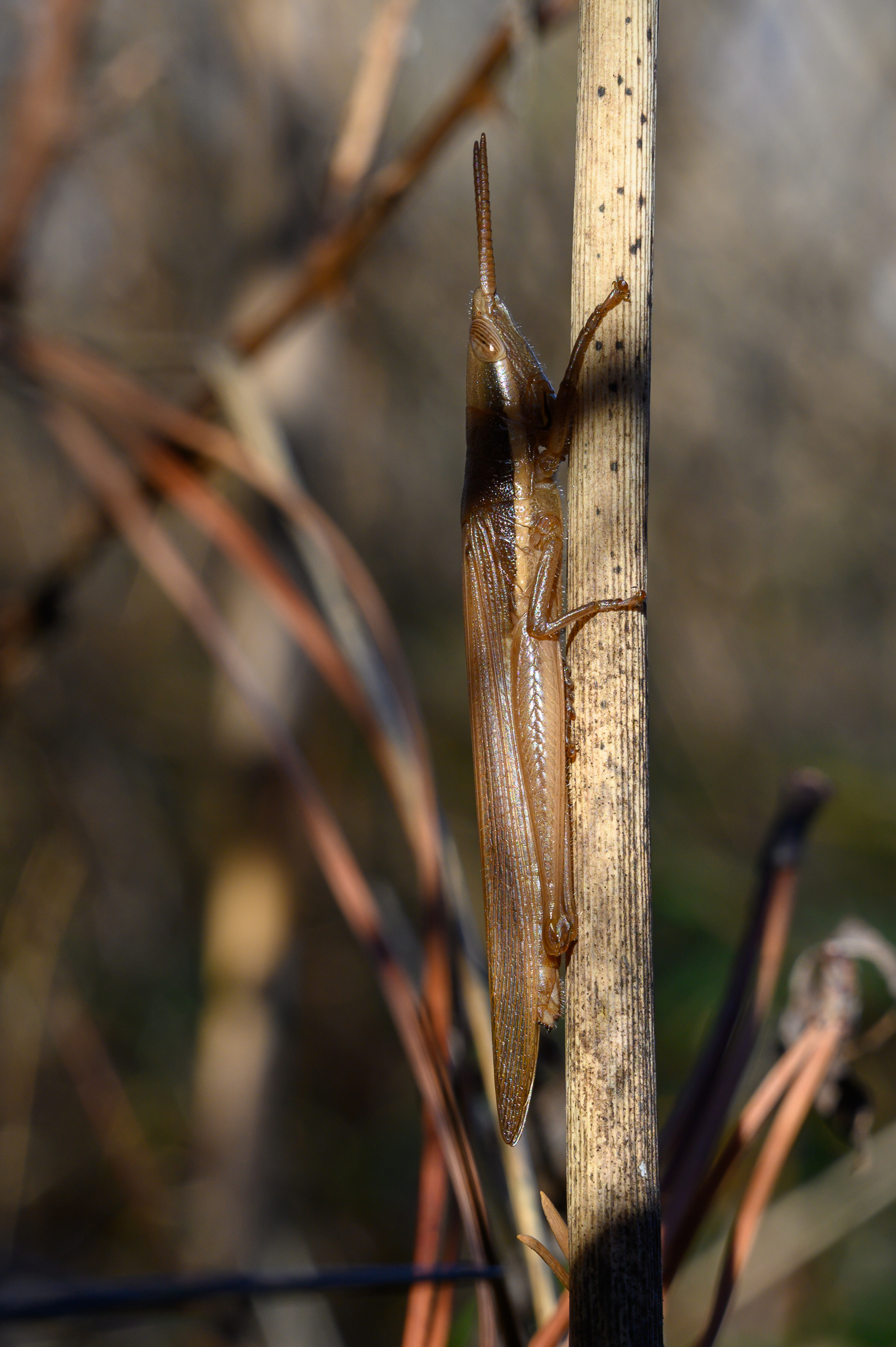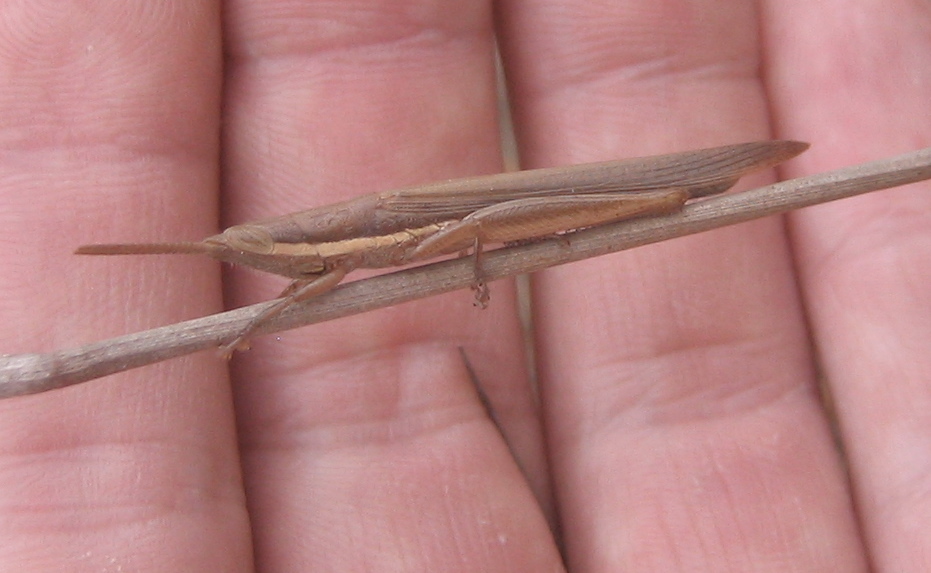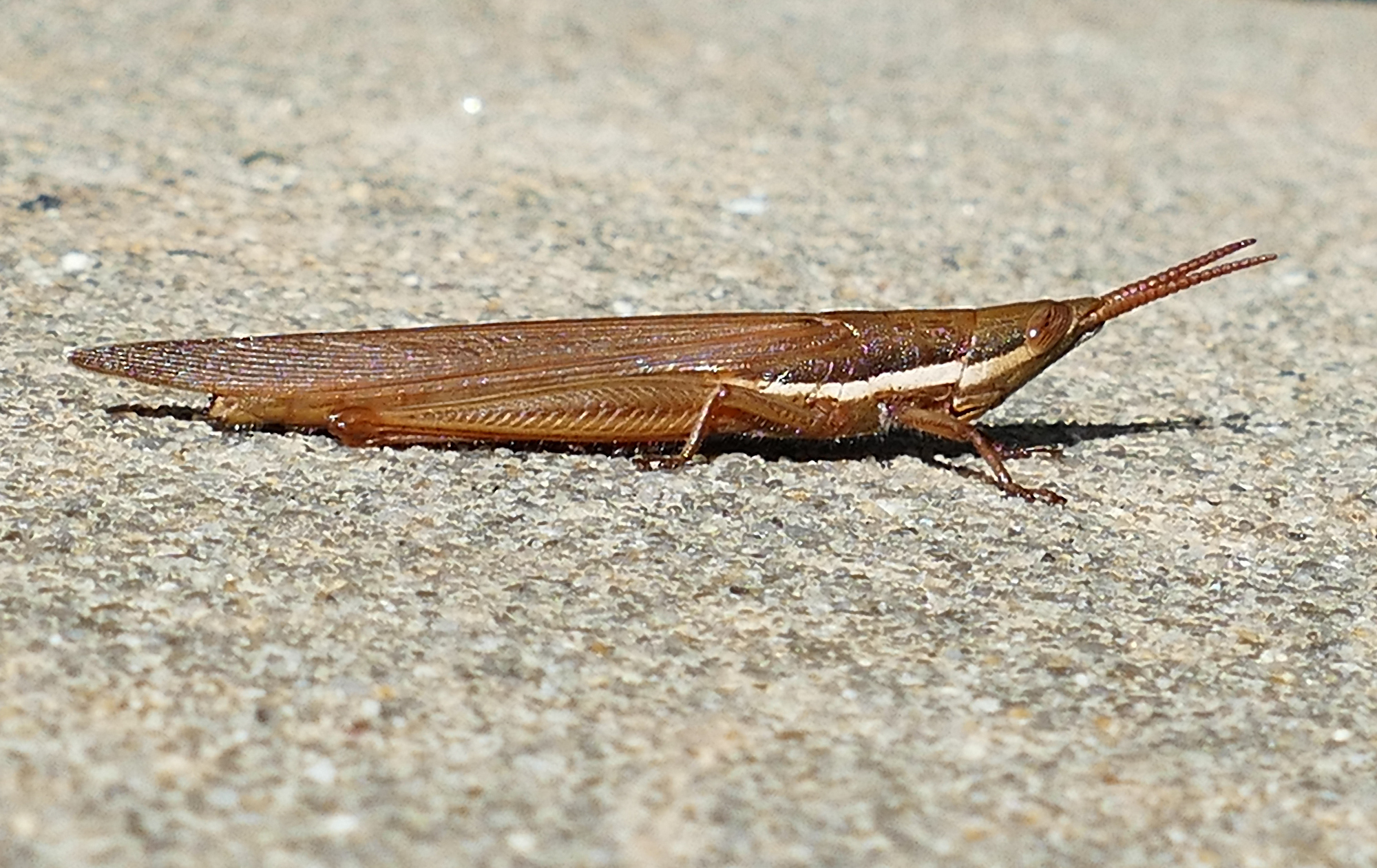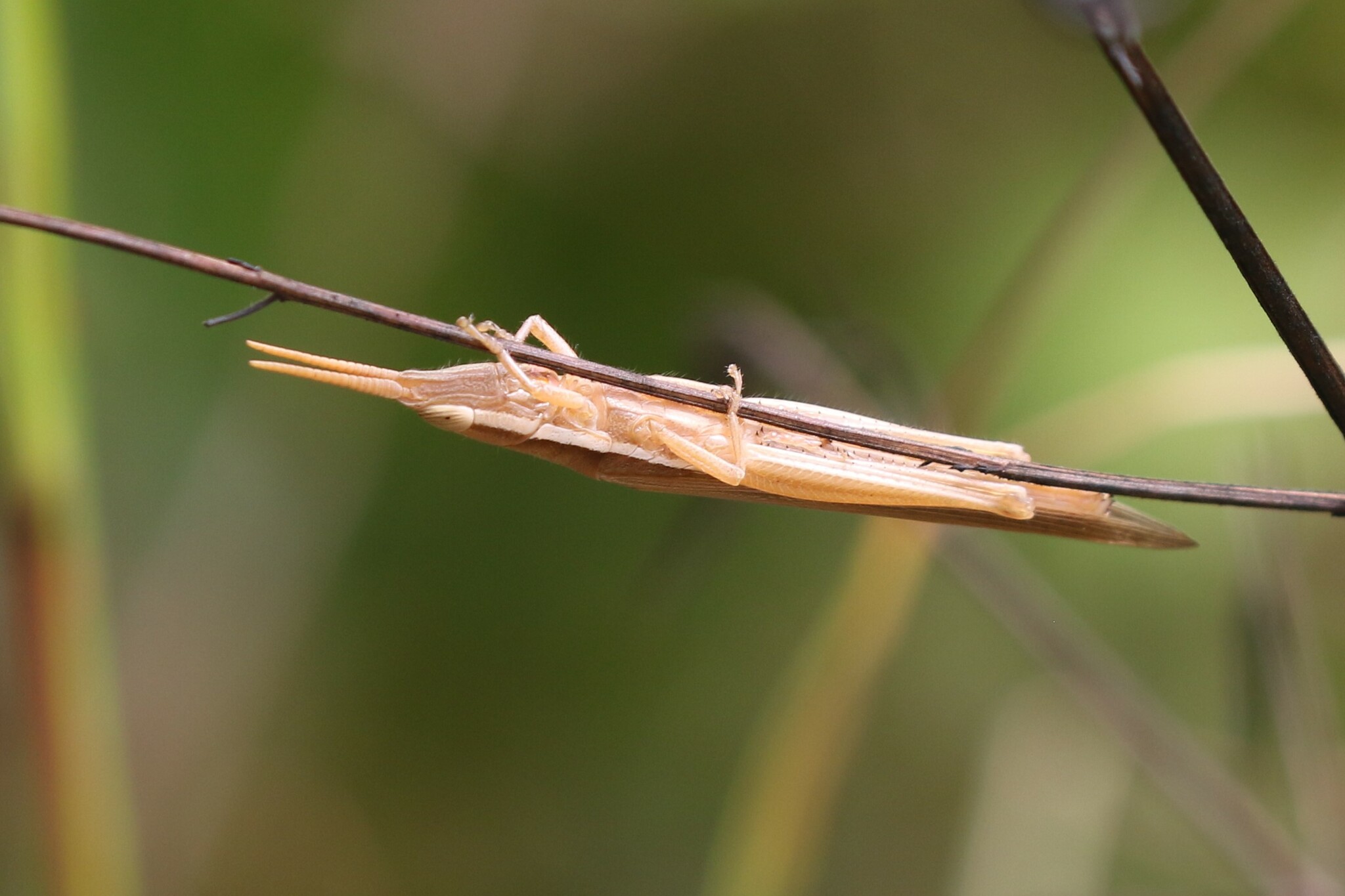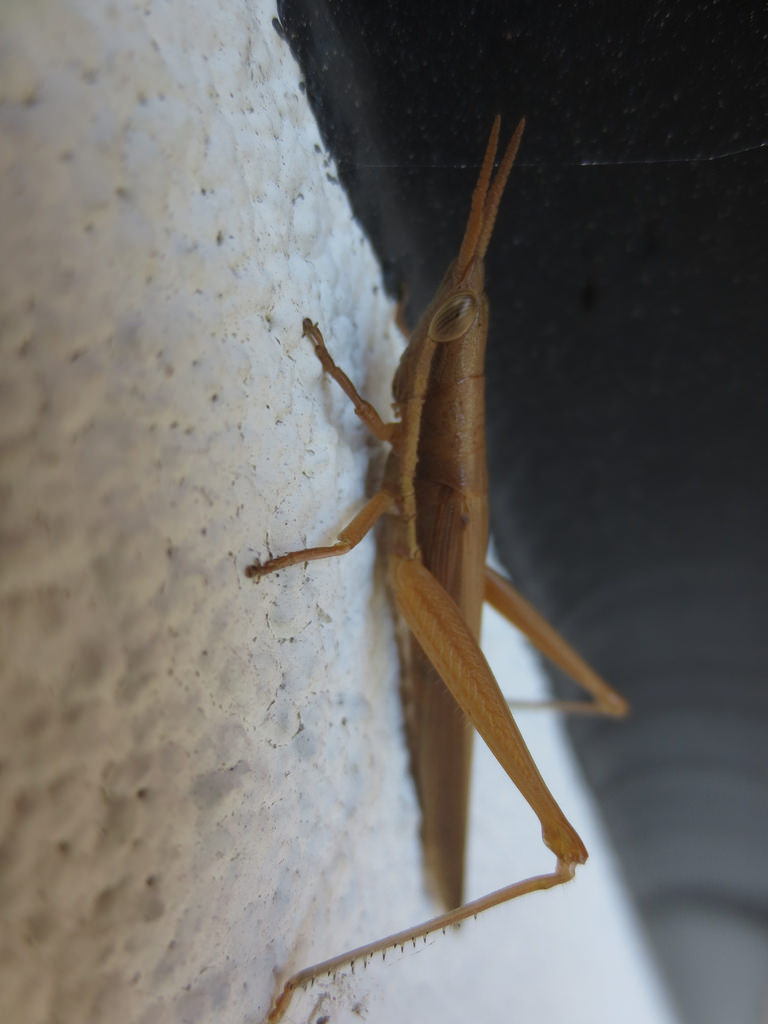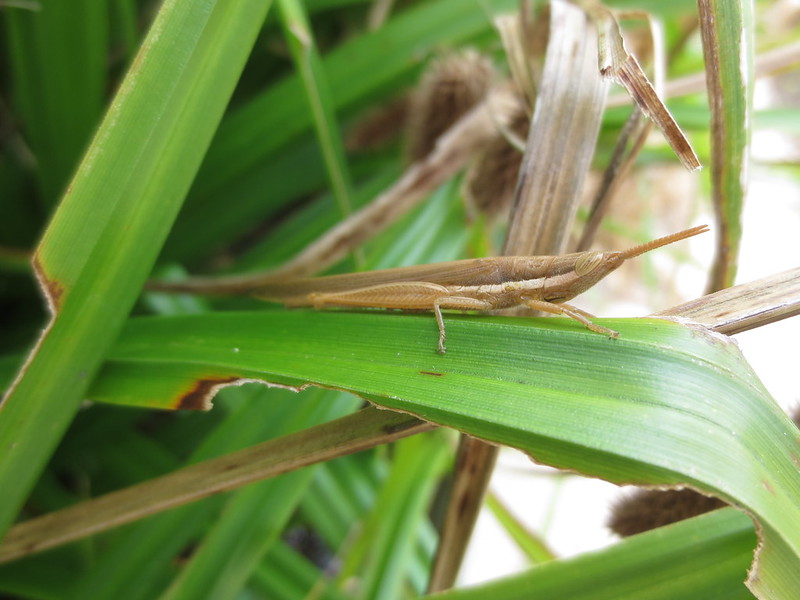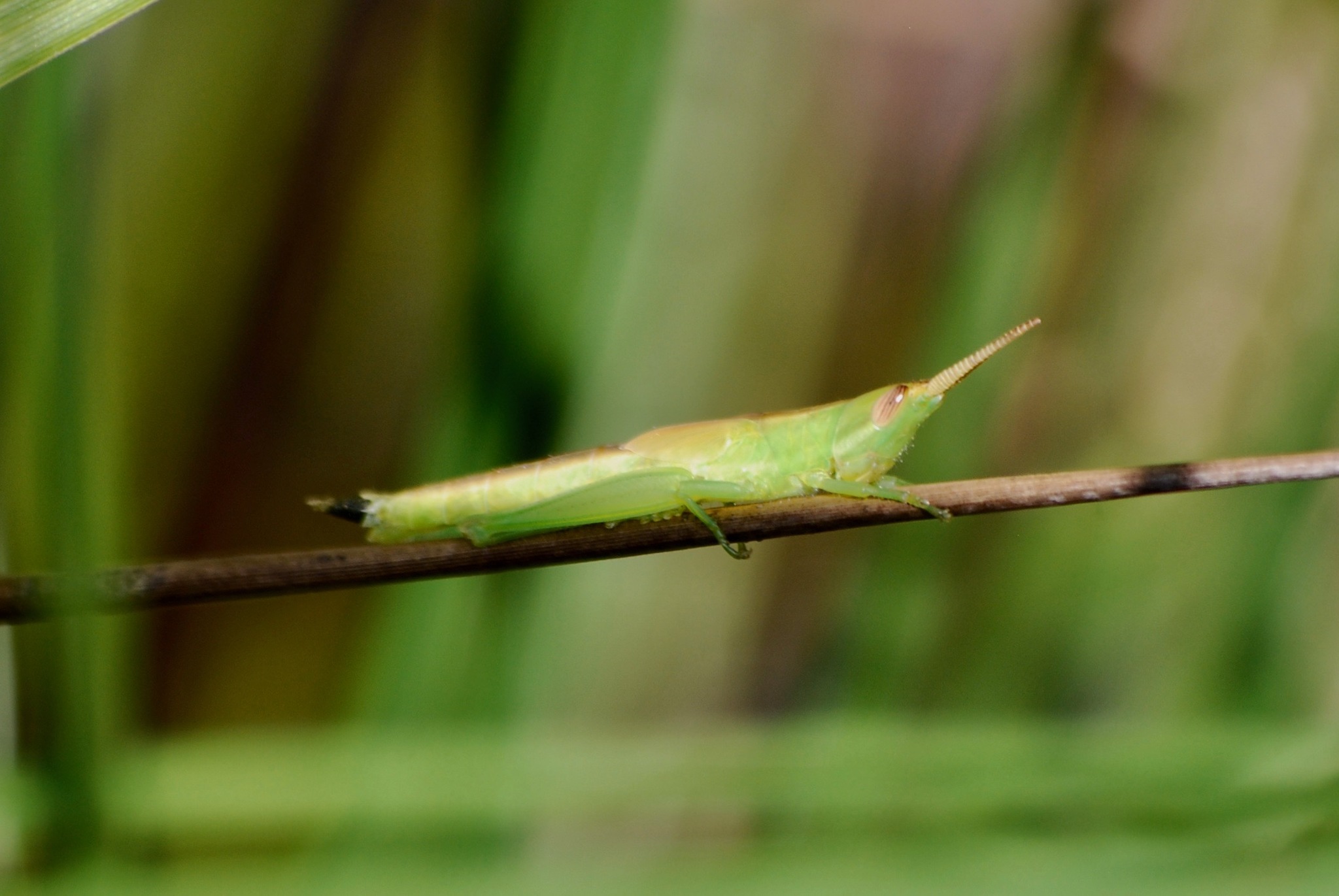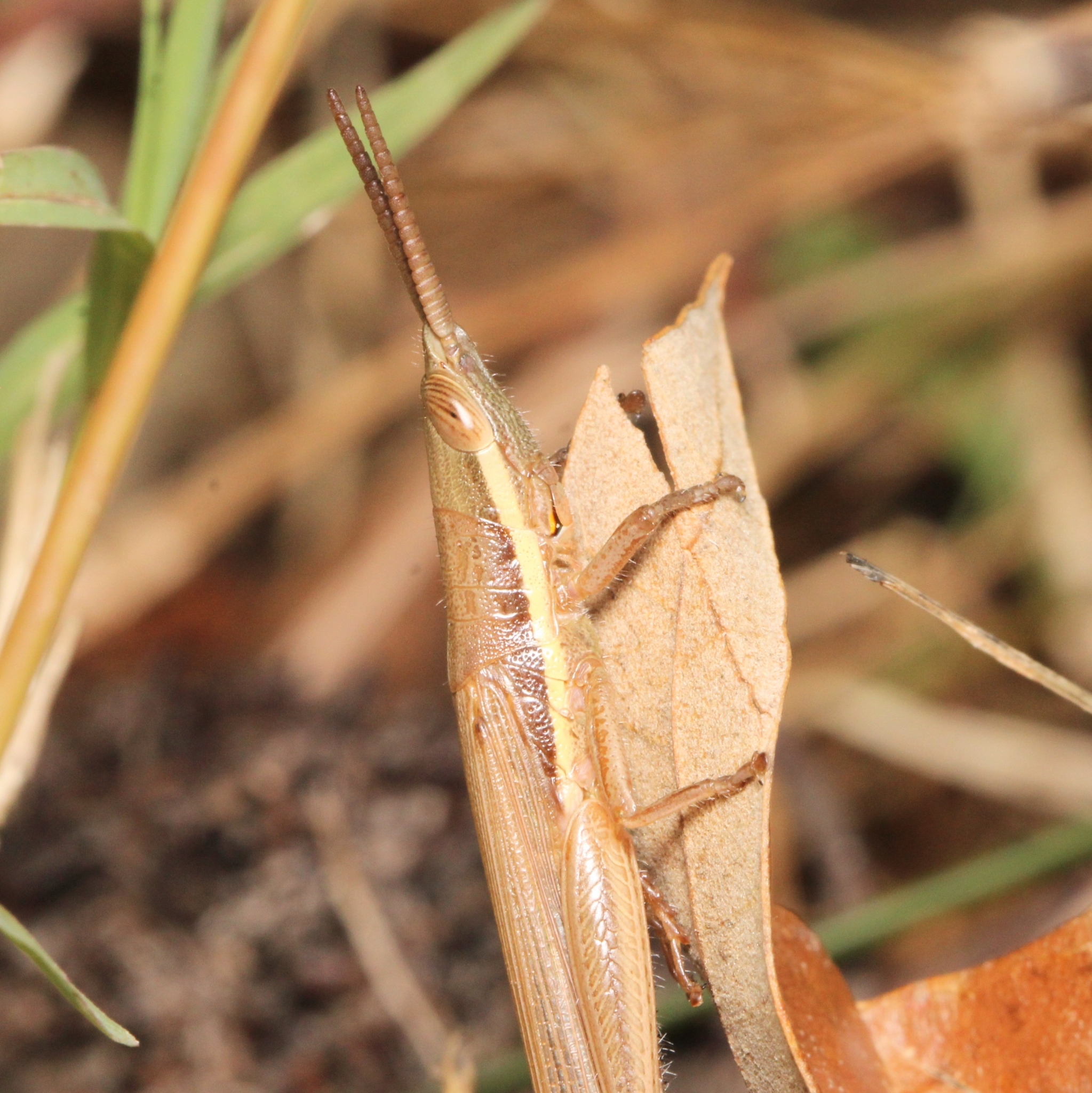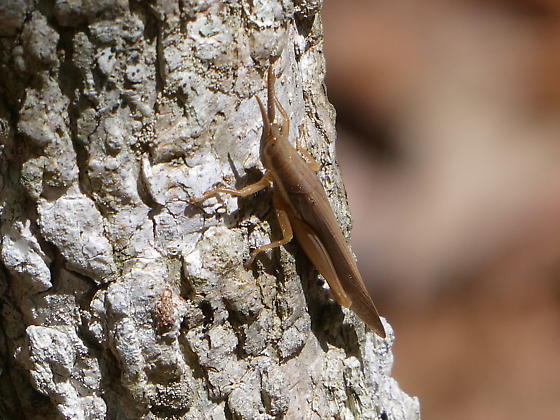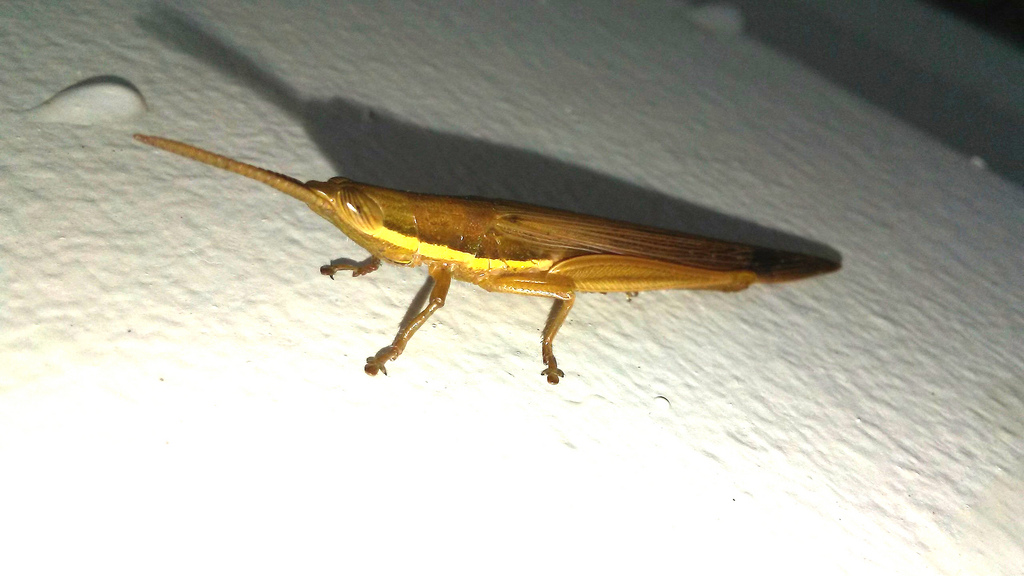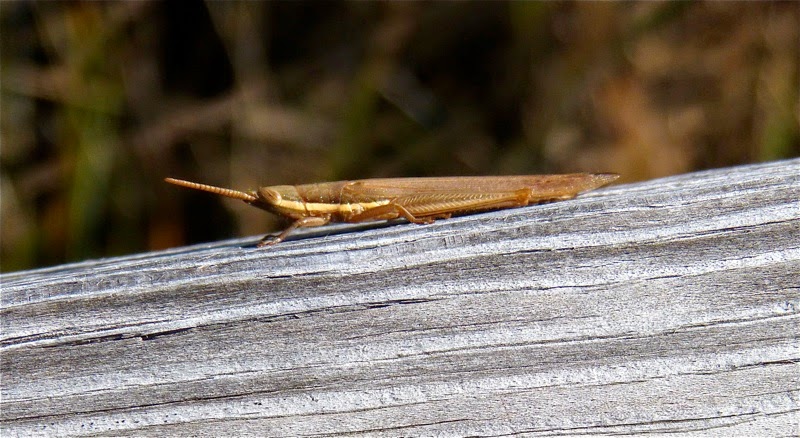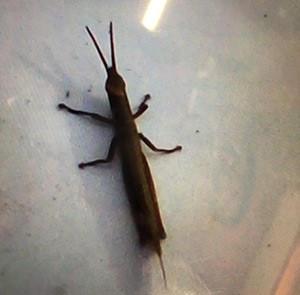Map Snapshot

















73 Records
Seasonality Snapshot
Source: Wikipedia
| Leptysma marginicollis | |
|---|---|

| |
| Mating pair of Leptysma marginicollis | |
| Scientific classification | |
| Domain: | Eukaryota |
| Kingdom: | Animalia |
| Phylum: | Arthropoda |
| Class: | Insecta |
| Order: | Orthoptera |
| Suborder: | Caelifera |
| Family: | Acrididae |
| Genus: | Leptysma |
| Species: | L. marginicollis
|
| Binomial name | |
| Leptysma marginicollis (Serville, 1838)
| |
Leptysma marginicollis, the cattail toothpick grasshopper or slender locust, is a species of grasshopper. It has a very pointed head and flattened, sword-shaped antennae. Thus, it superficially resembles grasshoppers in the subfamily Gomphocerinae, but is easily distinguished by the presence of a spur, or spine, between the front legs. They are usually brownish with a white, yellow, or brown stripe from the eye to the base of the front legs. The head is as long as, or longer than, the prothorax. On top, the body may also be red or pink. The front wings are sharply pointed, extending 3-5mm beyond the tip of the abdomen.[1][2][3]
Distribution and habitat
[edit]This species is found throughout the U.S., Mexico, in the neotropics, and the Caribbean. It inhabits wet areas, and is usually found on emergent vegetation such as cattails and sedges.[4][2][3]
Behavior
[edit]The mating season for Leptysma marginicollis begins around April, after which eggs are laid inside the stem of a plant.[4]
References
[edit]- ^ "Leptysma marginicollis species Information". BugGuide.net. Retrieved 2021-12-07.
- ^ a b Otte, Daniel; Cigliano, Maria Marta; Braun, Holger; Eades, David C. (2021). "species Leptysma marginicollis (Serville, 1838)". Orthoptera species file online, Version 5.0. Retrieved 2021-09-10.
- ^ a b "Leptysma marginicollis Report". Integrated Taxonomic Information System. Retrieved 2021-12-07.
- ^ a b Stephen Welton Taber; Scott B. Fleenor (2005). Invertebrates of Central Texas Wetlands. Texas Tech University Press. pp. 201–202. ISBN 978-0-89672-550-8.
